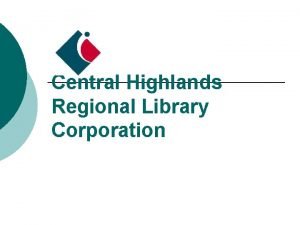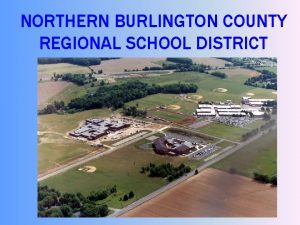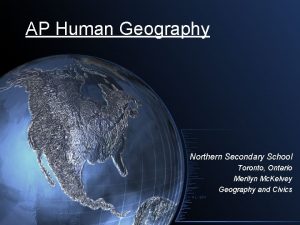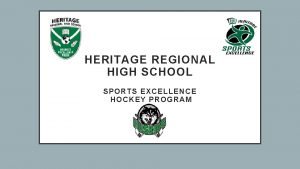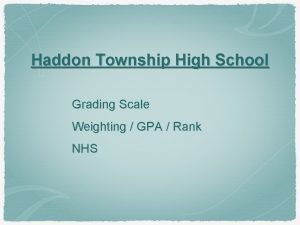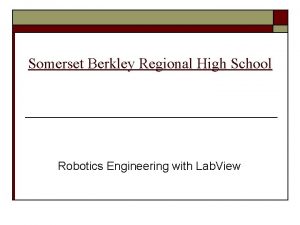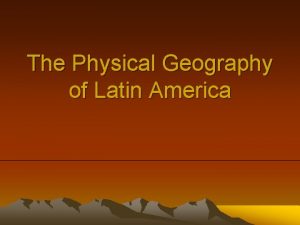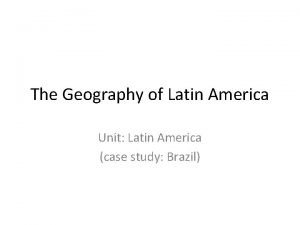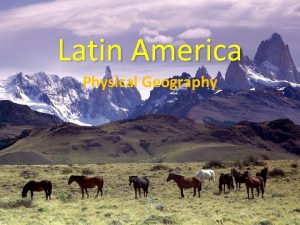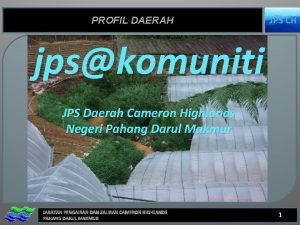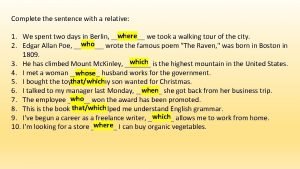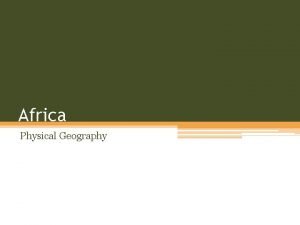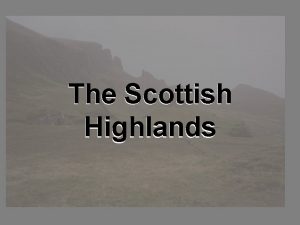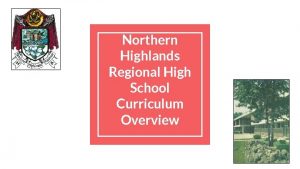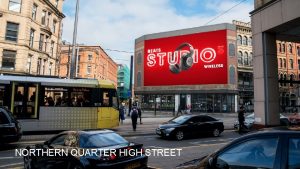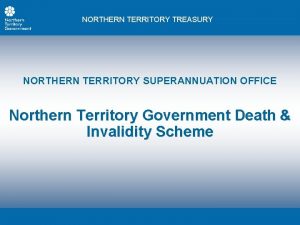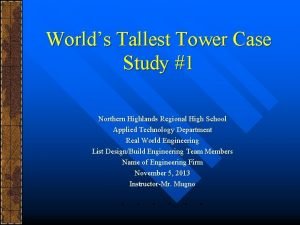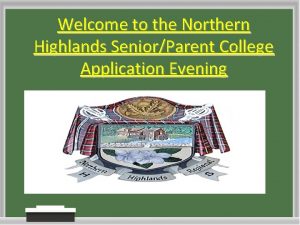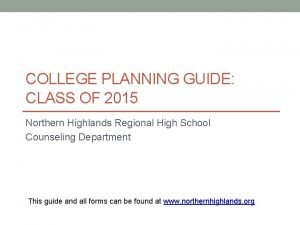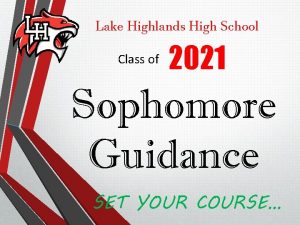Northern Highlands Regional High School Applied Technology Department
















- Slides: 16

Northern Highlands Regional High School Applied Technology Department Real World Engineering List Design/Build Engineering Team Members Name of Engineering Firm Date – 1/5/15 Instructor- Ms. Sicola

Your Engineering Firm has been approached by the New York State Transportation Authority to Design and Build the World’s Fastest Transportation System. The vehicles must travel between New York City and Washington DC as fast as possible in the shortest amount of time.

The problem we had to solve was to design and build. the world’s fastest mass transit mag -lev vehicle that will travel between two designated points in the shortest period of time.

The vehicle must use magnetic levitation as the means of reducing friction. The vehicle prototype can measure only 21/2 inches wide and have a maximum length 7. 75” long – minimum length of 6”. The vehicle will use a powerful electric motor and propeller(s) as the means of propulsion. The vehicle must travel down the length of a 15’foot track in the shortest amount of time.

You must use only the materials supplied by the teacher to construct the mag-lev vehicle. The body of the vehicle must be constructed of one piece of Styrofoam that measures 7. 75 inches long by 2 -1/2 inches wide by 2 inches in height. . The Styrofoam can be cut and shaped anyway possible to create a sleek, aero dynamic vehicle body. The base of the vehicle will be constructed of a 3/16 inch thick piece of foam core board. Each Design/Build team will receive per (each) vehicle: rough stock foam measuring 2 -1/2 x 7 -7/8 x 2, foam core board measuring 3/16 x 8 X 2 -7/16, 6 magnets, one 9 volt DC high speed electric motor (5, 000 rpm), a propeller, red and black electric wire, solder and hot glue. Each Engineering Team will have ~8 -10 class periods to design, build and test the final solution to the mag-lev vehicle.

Theory on how it will work: Prototype #1) Prototype #2) Prototype #3)

Results of tested runs: performed Prototype #1 Run 1: Run 2: Run 3: Prototype #2 Run 1: Run 2: Run 3: Prototype #3 Run 1: Run 2: Run 3: times and explain how it




Description of the Final Design: Time#1: Time#2 Tine#3

COPY QUESTIONS INTO WORD ANSWER 1. Did your design solution meet all the design criteria and stay within the design constraints? 2. If the answer is NO, what did you have to change in either the design criteria or constrains? 3. What was the total mass that your mag-lev measured in grams? 4. Explain how each of your mag-lev vehicle designs incorporate the principles of balance and center of gravity? 5. Describe what your team observed when testing each group members prototype design solution. 6. Describe in a few sentences what your Design/Build Team would do differently with the final solution in order to make it perform better. 7. How did your final design solution (mag-lev) compare to the other mag-lev vehicles tested and built in class? 8. Explain in a paragraph what your team found the most difficult part(s) of this case study? 9. What was your fastest time recorded out of 3 attempts? 10. Create a line graph comparing the times for your final 3 attempts? 11. Create a line graph comparing the weights (grams) for all the Design/Build Team’s maglev vehicles? 12. Create a bar graph comparing the fastest times for all the Design/Build Team’s maglev vehicles? 13. Create a bar graph comparing the average times for all the Design/Build Team’s maglev vehicles 14. What was the calculated speed of your vehicle in Feet/Second for each of your final 3 attempts? 15. What was the calculation of your vehicles in M. P. H for each of your final 3 attempts? 16. Do you feel that Magnetic levitation vehicles and trains are a possible solution to our energy and transportation problems? Why? 17. Each group member write a 2 paragraph evaluation of the project explaining likes, dislikes, was it interesting, fun etc. Write your names at the beginning of the evaluation. 18. CAD Drawings – each group member will produce a 2 view drawing of their final solution/prototype

Research Paper – 80 pts Working Model Vehicles – 120 pts (each group member’s car to receive its own grade) 45 pts Fastest timed run according to the rubric 45 pts Average time of all 3 trial 30 pts individual – fastest time and average of time trail – 15 pts each Final Vehicle – 120 pts 45 pts Fastest timed run according to the rubric 45 pts Average time of all 3 trial 30 pts individual – fastest time and average of time trail – 15 pts each Possible Solution CAD drawings – 100 pts Documentation – 120 pts CAD Drawing – Final Solution 100 pts Presentation – 100 pts Meeting completion deadline dates – 15 pts each

Speed: Based upon rubric for time

Research Paper – 1 class period (1) 2 Possible Solutions drawn in CAD - ~2 -3 class periods (4) Construct 2 possible solution vehicles and test on the track – ~8 class periods (12) Presentations – ~1 class period (14) Testing Mag Lev Vehicles on Track – ~1 -2 class periods (15 -16) Documentation Report/CAD Drawings – ~2 class period (17 -18) ~ = approximately

 Lake highlands high school counselors
Lake highlands high school counselors Central highlands regional council tenders
Central highlands regional council tenders Central highlands library
Central highlands library Northern burlington county regional school district
Northern burlington county regional school district North durham high school
North durham high school Northern high school toronto
Northern high school toronto Heritage regional high school hockey
Heritage regional high school hockey High school grading scale
High school grading scale Somerset berkley regional high school
Somerset berkley regional high school Niosh and dosh
Niosh and dosh Physical geography of mexico
Physical geography of mexico South america highlands
South america highlands Rio grande river
Rio grande river Jps cameron highlands
Jps cameron highlands We spent our holiday in scotland last year
We spent our holiday in scotland last year Tradouw wines
Tradouw wines The ethiopian highlands
The ethiopian highlands


